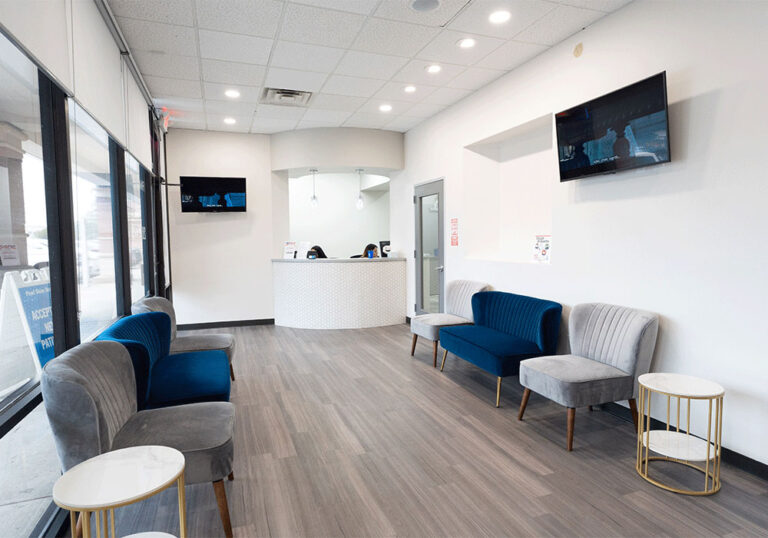Dentures
Dentures are used when a person is missing most or all of their natural teeth. It is essential that they are durable, natural looking, and offer outstanding performance.
Dentures in Houston, TX
Dentures are prosthetic teeth secured to a gum-colored base. Dentures are a great option for people who are missing most or all of their natural teeth, but they can also be used without dental implants. The need for dentures could be the result of an injury or declining oral health. Dentures make it easy for people to continue to enjoy the benefits of healthy, natural teeth, where chewing is a fluid motion without pain or complication. They are easy to use and offer an effective solution for overcoming severe tooth loss.
At Pearl Shine Dental, dentures are one of our specialties. When you visit us, we will initially examine your mouth and oral conditions. A perfect impression of the alveolar ridges on the top and bottom of your mouth is made and used to make the base of the denture in a dental laboratory. Prosthetic teeth are made in the laboratory to re-create a natural-looking smile. Once the results are satisfactory, the temporary dentures are made into permanent ones. After this, the dentures’ form and function are carefully evaluated to ensure their proper fit.
-
How do I clean dentures?
Traditional removable dentures require proper care to keep them clean, free from stains, and looking great. Below are some cleaning steps and things to avoid when using traditional removable dentures:
- Remove and rinse dentures after eating by running water over them to remove food debris
- Handle them carefully, and don’t bend or damage the plastic or clasps when cleaning
- Clean your mouth after removing dentures with a soft-bristled toothbrush
- Brush your dentures once a day and soak them in a nonabrasive denture cleanser to remove food, plaque, and other deposits
- Soak dentures overnight in a mild denture-soaking solution to keep them moist and hold their shape
- Schedule regular dental checkups so your dentists can ensure proper fit, prevent slippage and discomfort
- Avoid abrasive cleaning materials, whitening toothpaste, products containing bleach on your dentures, and hot or boiling water that could warp them
-
What are full dentures?
Certain dental conditions can become unmanageable (tooth decay, gum disease, etc.). This could lead to removing your remaining teeth on one or both jaws. Regardless of the case, full dentures are an economical and efficient way to restore your smile.
A complete denture consists of a thin acrylic base that rests on the gum tissue and is the same color as your gums. Porcelain or acrylic replacement teeth built into the base give the appearance of natural teeth emerging from the gums. We know that your smile is unique, and our staff has the experience to help you select the teeth that appear most natural and harmonious in your smile. This gives you the option to customize how you look, whether you want a “new” smile or restore the one you had.
Dentures can be secured more firmly to your jaw with dental implants placed in the jaw and connected under the base of the denture. This connection can be designed to create permanent fixation of the denture or to allow for its removal at times. In addition to having greater retention and a more natural look, implant-supported dentures tend to last longer. Your dentist can discuss these options and help you understand how dentures can improve your dental experience.
-
What are partial dentures?
Partial dentures are an economical solution to replace the missing teeth and fill in the spaces, improving chewing ability and the confidence to smile. A partial denture in place will also help keep your natural teeth from shifting, lowering the risk of losing those teeth in the future.
Most partial dentures contain a thin metal framework designed to rest close to your gums and allow for a smooth, non-bulky feel. The framework is supported by your natural teeth to provide a reliable, secure appliance that is easy to use. Where teeth are missing, natural-looking replacement teeth are attached to the frame, and gum-colored acrylic is used to make the appliance blend with your mouth. We know everyone is unique, and that’s why your dentist will work with skilled technicians to create a comfortable, tailored solution for you.
With advances in technology, implants can also be used to support removable partial dentures, improving the fit while reducing the size of the appliance. Dentures inherently bring some challenges, especially to new wearers. We work to minimize everyday frustrations to the lowest level possible.
We look forward to discussing your options to make your mouth full again and to give you back a confident, glowing smile!
More Questions?
If you have more questions about dentures, please contact our office, and we will be happy to discuss further.

